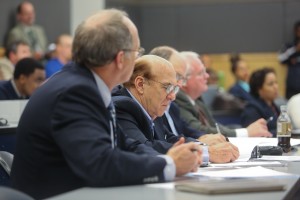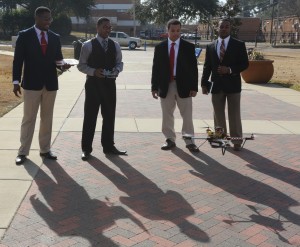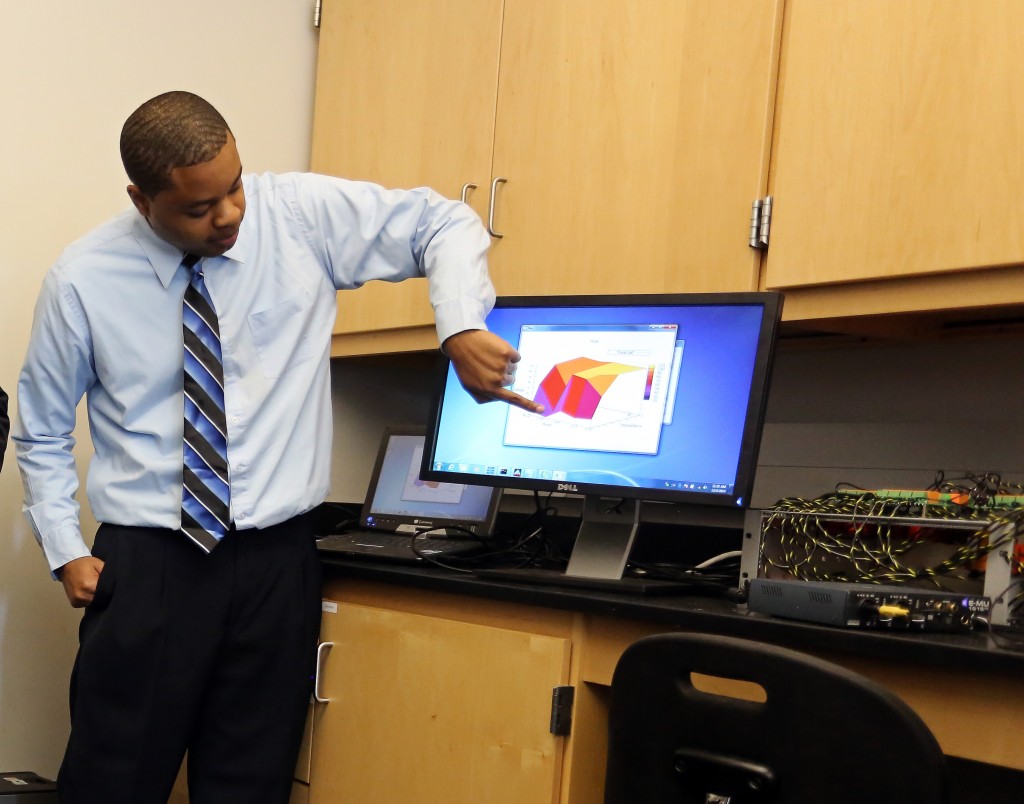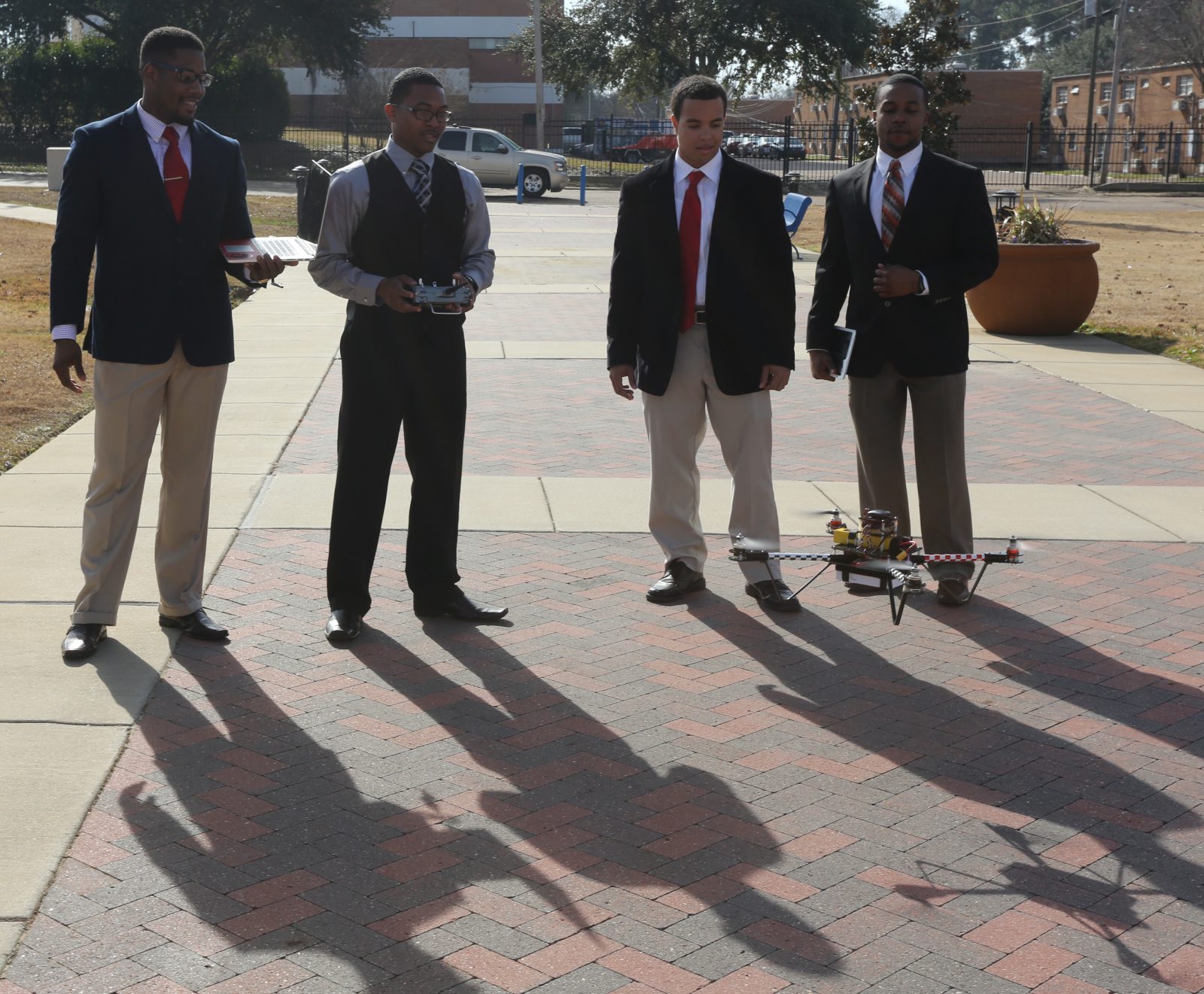In case you have been hearing something that sounds like a large mosquito floating above the Jackson State University, it’s the handiwork of a group of engineering students as part of a senior class project.

Frederick Burns, Fredicus Funchess, Josue DeLeon and Jonathon Buchanon built a “Tiger Cam” drone aircraft from scratch for their senior Engineering School project. They tested the “quadcopter” for several days prior to showing it off on Thursday to panel of outside judges holding high engineering credentials.
The students explained how they came up with the idea in January and designed the craft to be lightweight and be guided by a computer. The electronics use a total of 340 watts, including a 60-watt motor. The craft, which looks like a two-foot-wide spider, uses an iPhone case as its body but is programmed through a Microsoft system.
Once the craft’s instructions or flight path is typed into the computer, and it is given the go ahead, it is completely autonomous. It guides itself without human control — although a back-up system allows its guidance system to be overridden.
In the demonstration, it lifted off from the pedestrian walkway in front of the Engineering building, rose to a height of about eight stories, and flew in a slow, square flight path covering about the length of a football field. The four rotors made a soft hum, like a rather large mosquito.
Equipped with a camera, the craft took photos of spectators waving below.
The purpose of the craft was to show that a small drone can be built cheaply, as well as to be used to promote the university. The students said that materials cost about $1,000.
One of the judges, Ron Ogan, a member of the board of governors of the Institute of Electrical and Electronic Engineers Inc., said such projects are useful. Companies “are always looking for new solutions” to real world needs and “opportunities for universities and companies to collaborate.”

One of the judges was Winnfort Myles from Raytheon of Forest, Miss., in charge of engineering support for military and airborne products.
The Tiger Cam would probably not be useful for military applications, for example, Ogan said. The military wants more of a “hands on” approach to respond to conditions on the battlefield. But it could have other uses.
The students said they intend to put up a website, named seniordesign2.com, that will feature the Tiger Cam.
The board meets twice a year to review senior projects at JSU, according to Mahmoud A. Manzoul, professor and chair of the Department of Computer Engineering.
Another demonstration was given by seniors Khandaker Al-Zahid, Johnny Chapman and Joshua Turner, who built a device to measure and assess electronic amplification.
Turner, who will graduate on Dec. 12 and has already been hired to start work at L3, a defense contractor, said that the device can be used to assess the sound systems of cars, as well as more complex functions.
Earlier, the judges viewed a point-and-shoot camera.








